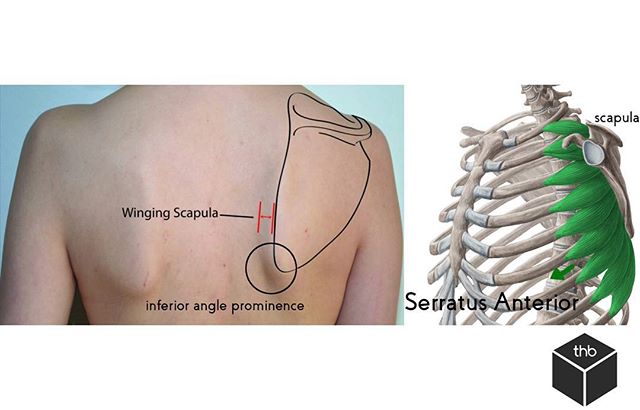A Winging scapula is a result of weakness of the Serratus Anterior muscle or damage to the long thoracic nerve which supplies this muscle. The result is a protruding shoulder blade into the back.Test yourself – While wearing a tank top:Put yourself in a pushup position against the wallLean forward into your handsAsk somebody to take a picture for you.Do you notice a bump on one side versus the other?If you don&;t have a friend – go into the washroom and take a look at your shoulder heights.Do you notice one shoulder significantly lower than the other?If you do. You have scapular winging. This can affect your ability to lift, pull, or push objects. The reason is because scapular winging is a muscular imbalance which results in malpositioning of the shoulder blade. This disrupts the Scapulohumeral rhythm – which is the optimal ratio of movement when you lift your arm from your side above your head. If this is a result from a long thoracic nn entrapment Active Release Therapy or ART can definitely help with this nervous entrapment. Proper positioning and movement of the scapula is critical for full and normal shoulder range of motion. Without it, your scapular is SICK! (Scapular malposition, Inferior medial border prominence, Coracoid pain and malposition, and dysKinesis of scapular movement) SICK scapula or scapular dyskinesis refers to an injury resulting from overuse and fatigue of the muscles that stabilize and provide motion for the scapula.To counteract it we want to:. Treat the underlying soft tissue adhesionsStrengthen the affected musclesGrease the groove and provide stimuli to maintain the positioning and movement of the scapula

Posted in Instagram | Tagged: 39, athlete, backlever, balance, barstarzz, calisthenics, change, chiro, dyskinesis, fitness, frontlever, gym, handstand, health, impingement, markham, mobility, motivation, movement, muscleup, posture, prevention, rehab, rings, shoulder, strength, stretching, thehealthbox, toronto, workout, yoga 



 by
by 

Comments are closed.